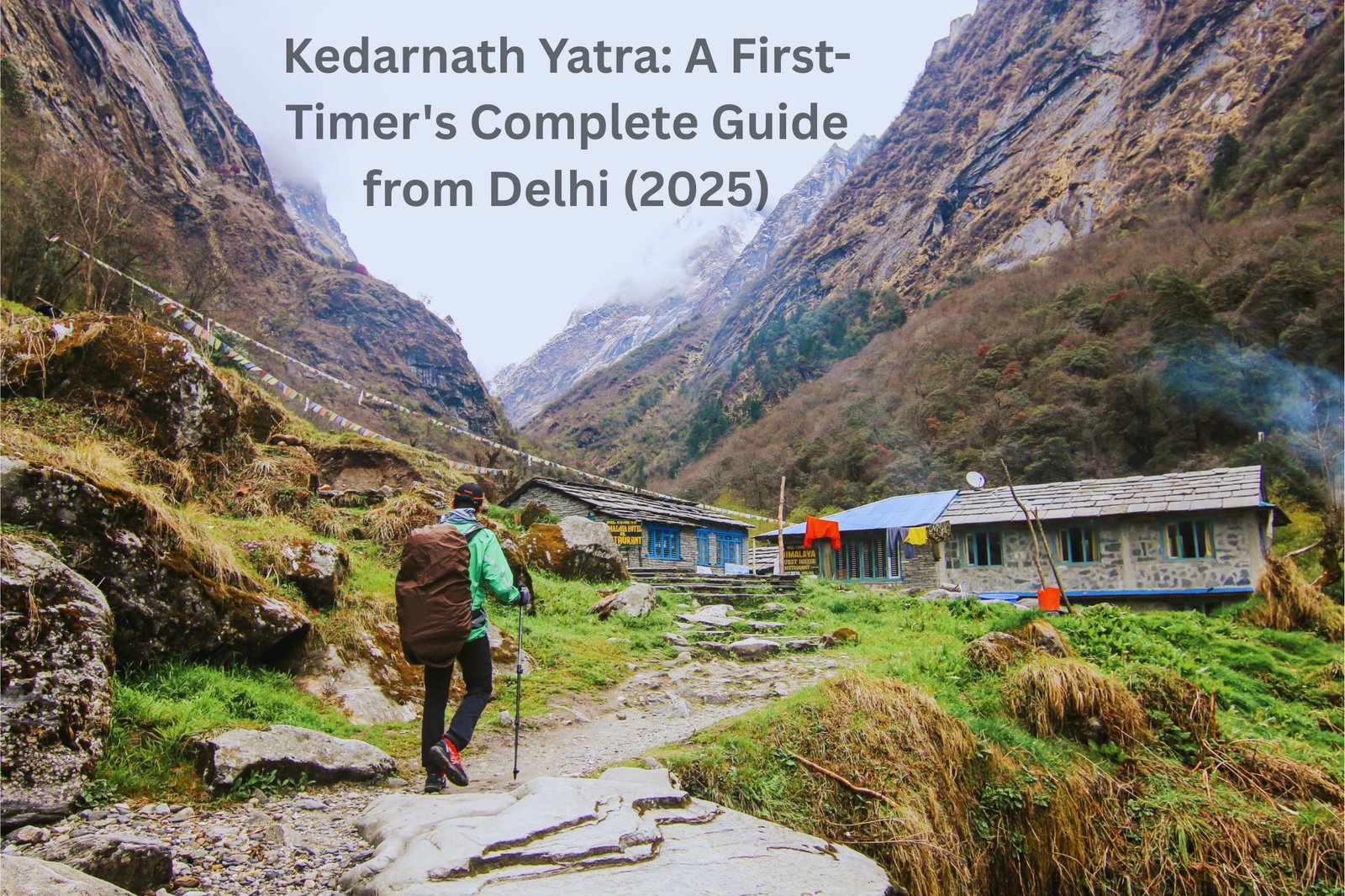For countless souls, the call to Kedarnath is a spiritual imperative. It was for me. This isn’t just a travel guide; it’s the story of my journey from the bustling heart of Delhi to the profound silence of the Himalayas. If you’re planning your first Char Dham Yatra, this guide will walk you through the real logistics, the emotional highs and lows, and the practical tips I learned along the way.
Kedarnath Yatra at a Glance (Quick Facts)
For those planning the logistics, here’s a quick summary of the journey. The yatra typically begins from Delhi’s Kashmiri Gate ISBT, following the main route through Rishikesh and Ukhimath before reaching the trek’s official starting point at Gaurikund. From there, be prepared for a challenging 17 km trek each way. Throughout the journey, you’ll find key stops like Tattva Café and Apna Dhaba on the road, and markers like Junglechatti and Rambada on the trail. In terms of connectivity, we found that Jio provided the most reliable network in the higher regions. Crucially, remember that completing the mandatory online registration is essential before you begin, and it’s highly advisable to carry sufficient cash as digital payments can be unreliable.
The Journey from Delhi to the Mountains
The physical journey began at a chilly 3 AM, boarding a bus from Kashmiri Gate ISBT with my friends, Aman, Joy, and Abhishek. The transition from the plains to the mountains is gradual but profound.
- Rishikesh to Ukhimath: After the initial bus journey, the real road trip begins. The landscape shifts dramatically, with the Ganga river as your constant companion for a large part. We relied on ₹50 shared taxis for shorter distances, a common and affordable mode of transport here.
- A Living Tradition: We were blessed to witness the procession of Baba Kedar’s palanquin moving from its winter home in Ukhimath. This isn’t a tourist event; it’s a raw, powerful display of living faith. We observed the energy at the Omkareshwar Temple and a spontaneous Bhairav Puja, moments that grounded our trip in deep cultural reverence.
- Food and Lodging: Our base for the night was Gaurikund. Accommodation is basic, designed for pilgrims. We had a simple, soul-satisfying meal of puri, chana, and kheer at a community kitchen, a humbling experience that connects you with fellow travelers.
The Sacred 17km Trek to Kedarnath
We began our trek at 5:45 AM. The air was thin, cold, and filled with a collective energy of devotion.
- The Path: The 17km route is a paved but steep climb. It tests your physical endurance and mental fortitude. You will pass key markers like Junglechatti and the rebuilt Rambada, a solemn reminder of the 2013 floods.
- Historical Echoes: As I walked, I couldn’t help but think of the path’s legacy. This was the route the Pandavas took to seek Lord Shiva’s forgiveness. The temple itself, constructed by Adi Shankaracharya in the 8th century, is a testament to timeless faith. Its robust Nagara-style architecture is why it has survived floods and even a “Little Ice Age” when it was buried under snow for centuries.
Darshan at Kedarnath Dham
After hours of trekking, your body is exhausted, and your mind is unusually calm. Then, you see it. The first glimpse of the temple against the majestic, snow-clad peaks is an emotion that cannot be described, only felt.
The physical fatigue melts away, replaced by an overwhelming sense of arrival. For me, this moment was deeply personal. The date, May 3rd, was connected to a recent family loss. I hadn’t planned it, but standing before the ancient, minimalist stone structure, I felt a profound catharsis. The silence of the temple speaks directly to your soul. Tears of gratitude flowed freely.
The temple’s architecture is powerfully simple. You see the main Garbhagriha (sanctum sanctorum), the Sabha Mandap (assembly hall), and the iconic Nandi statue, ever-watchful. It is a structure built not for grandeur, but for permanence.
My Top 10 Practical Tips for Your Kedarnath Yatra
- Register Online: Ensure you have completed your Char Dham Yatra registration. It is checked at multiple points.
- Acclimatize: Spend a night in a place like Gaurikund or Ukhimath to let your body adjust to the altitude.
- Pack Light, Pack Smart: Carry waterproof layers, good trekking shoes, a first-aid kit, and energy bars.
- Stay Hydrated: Drink water constantly to avoid altitude sickness.
- Cash is King: While UPI is available in towns, network is unreliable. Carry sufficient cash for food, lodging, and transport on the trek route.
- Be an Ethical Traveler: The Himalayas are a fragile ecosystem. Avoid plastics, do not litter, and respect the local culture. Support the efforts of organizations like Healing Himalaya.
- Start Early: Begin your trek as early as possible to avoid the afternoon sun and have ample time to reach the top.
- Listen to Your Body: Do not push yourself too hard. Take breaks when needed. It is a pilgrimage, not a race.
- Book Accommodation in Advance: Especially during peak season, book your stay in Gaurikund and near the temple if possible.
- Come with Intention: This journey is more than a photo opportunity. Come with an open heart and a sense of reverence.
A Final Reflection
The question I left with was, “What does it mean to reach the divine?” I believe it’s not the destination itself, but the transformation you undergo on the path. The journey strips you down to your essential self and offers you a chance to connect with something ancient, powerful, and profoundly peaceful.
Jai Baba Kedar.

Leave a Reply